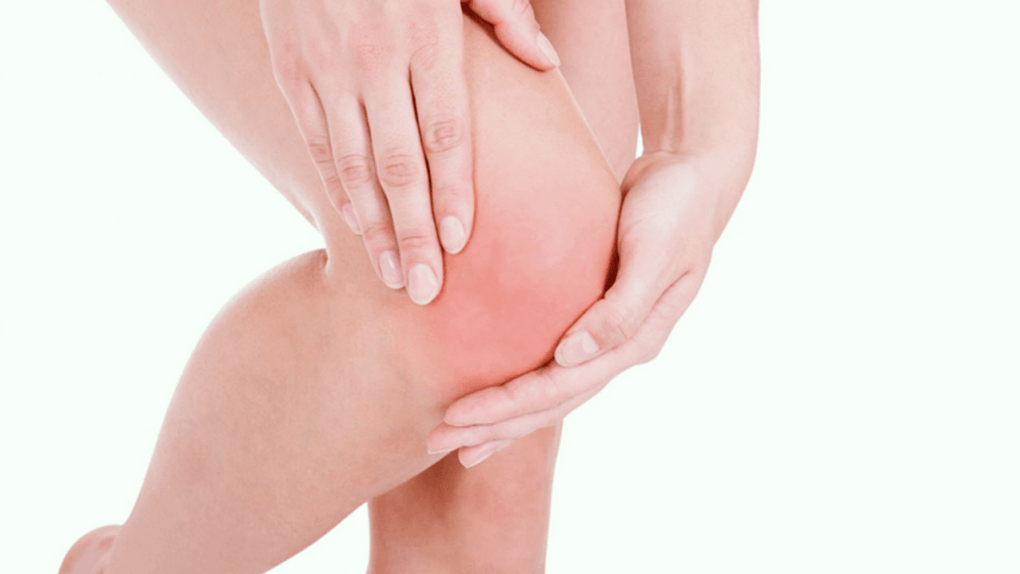With age, the cartilage tissue of various joints gradually degenerates, accompanied by the destruction of the joint capsule itself and its surrounding elements. Knee osteoarthritis (also known as arthroarthritis of the knee) is a degeneration of the cartilage in the knee joint.Initially, the disease is accompanied by pain, which can later lead to significant limitations in movement and even disability.
Knee osteoarthritis (also known as arthroarthritis of the knee) is a degeneration of the cartilage in the knee joint.Initially, the disease is accompanied by pain, which can later lead to significant limitations in movement and even disability.
Symptoms of knee joint disease
The main symptom of arthropathy is infrequent, constant, or never-ending pain in the knee.The most common symptoms are:
- Pain when changing position or going up stairs;
- pain at rest;
- Stiffness in the knees after sleep - first briefly, then for up to 30 minutes;
- A crunching, sharp sound accompanied by pain;
- Knee movement problems, rarely - inability to bend the knee;
- Visual deformation of the knee joint;
- Swelling of nearby skin;
- Claudication (characteristic symptom of advanced stages).
Pathology level 4
The appearance of symptoms depends largely on the stage of disease development.For example, in stage 1 a patient may feel no pain, but in stage 4 pathology the pain is significant and movement is very difficult.Pathological development is divided into 4 degrees:
- At first, there are no symptoms, but during an X-ray, the doctor may detect small deviations from normal.
- The second type is paroxysmal pain, mainly observed during physical activity, changing positions, squatting or climbing stairs.
- Third, the pain is severe and constant, even at rest.In this case, walking can only be done with the help of crutches.X-rays show significant joint space narrowing, meniscal degeneration, and bone tissue hyperplasia.
- Fourth, movement of the knee is difficult or even impossible.X-rays show complete destruction of cartilage tissue and sometimes the bones begin to fuse together.
Important!Even if you experience occasional knee pain, you should talk to your doctor and get an X-ray.If the disease is caught early, the chances of recovery are much greater.
Disease Diagnosis: Where to Go
For diagnosis, patients turn to a therapist and then see an orthopedic surgeon, rheumatologist, chiropractor, or exercise therapist (depending on the direction).Diagnosis involves interviewing, examining the patient, and performing a series of procedures:
- General blood and urinalysis;
- X-ray;
- computed tomography;
- MRI;
- Ultrasound examination of the knee joint capsule and adjacent structures - muscle tissue, tendons;
- Arthrocentesis (to collect fluid for analysis);
- Arthroscopy (a small camera inserted into the joint for accurate diagnosis).
Treatment of knee arthritis
The course of treatment is prescribed by the doctor.If the disease has not progressed, conservative treatment (without surgery) may be used.In this case, medication and physical therapy are required.Often, treatment is complex - patients will use different groups of drugs:
- NSAIDs for pain relief - diclofenac, ibuprofen and medicines based on them;
- Hormonal drugs (corticosteroid group) - they are used in cases where other drugs are ineffective;
- Antispasmodics - "Tolperisone" and its analogs;
- Chondroprotectants - drugs that stimulate the process of restoring cartilage tissue: "Chondroitin sulfate", "Glucosamine" in combination and alone;
- Drugs that stimulate the blood's saturation with oxygen, nutrients and improve blood flow ("Pentoxifylline", "Niacin", etc.).
These drugs are used in different forms - topical (ointments, gels), oral (tablets), intramuscular and intra-articular (injections).If necessary, in addition to drug treatment, doctors can also take the following measures:
- shockwave therapy;
- magnet therapy;
- laser treatment;
- electrotherapy;
- sonophoria therapy;
- Ozone therapy.
In extreme cases, when long-term use of drugs and surgery fails to achieve the desired results, and the condition is severe, surgery can only be treated.Several types of operations are possible:
- Osteotomy - the surgeon cuts a bone and changes its angle to reduce the overall load on the knee joint;
- Arthrodesis - In this case, the doctor fixes the bones together, eliminating mobility and reducing pain so the person can lean on the leg;
- Endoprosthesis – Complete replacement of the affected joint with a prosthesis.



















